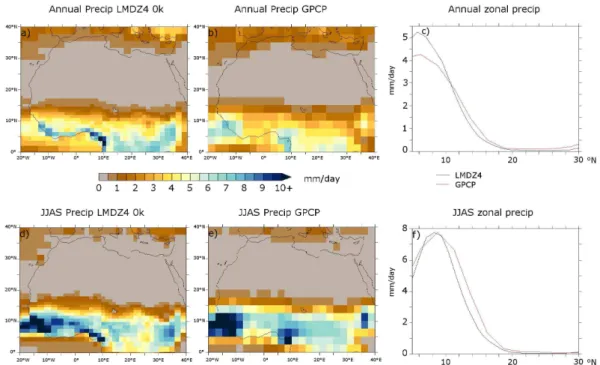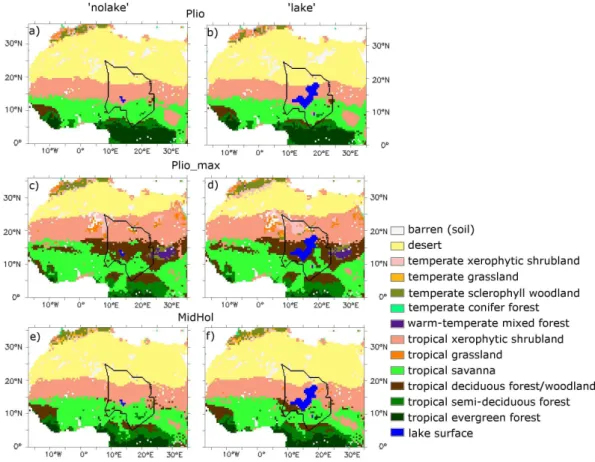Megalake Chad impact on climate and vegetation during the late Pliocene and the mid-Holocene
Texto
Imagem




Documentos relacionados
ment. The robustness of the simulations is also tested by comparison with two previous simulations of European MHL vegetation. We then try and isolate the climate factors driving
Variation in the number of exclusive Guineo–Congolian and Sudanian pollen taxa compared to paleohydrological changes dur- ing the Holocene for each latitudinal zone and the
(a) Arboreal pollen proportions; (b) Proportion of cultivated taxa; (c) propor- tions of both Quercus type charcoals in Lattara and Port Ariane archeological sites; (d) loga- rithm
We use three Atmosphere-Ocean General Circulation Model (AOGCM) simulations (RCP4.5 scenario, mid- Pliocene and present-day simulation) carried out with the IPSL-CM5A model
arid events and grey shaded bars represent high storm activity periods: (i) arboreal pollen proportions; (ii) proportion of cultivated taxa; (iii) proportions of both Quercus
Further, the PMIP2 and PMIP3 models all simulate a smaller and thinner Arctic summer sea-ice cover in the mid-Holocene than in the pre-industrial control climate.. The PMIP3 models
The summer precipitation in Southeast Asia (Fig. 1g) increases rapidly dur- ing the early to mid-Holocene (9 kyr BP to 6 kyr BP) with the gradually increased snow and glacier cover
Simulated changes in total and seasonal precipitation in the midHolocene compared to the piControl for each of the four precipitation regimes (Mediterranean, desert, monsoon,





